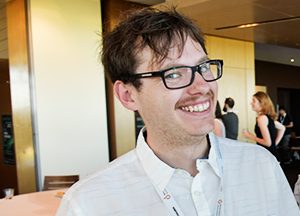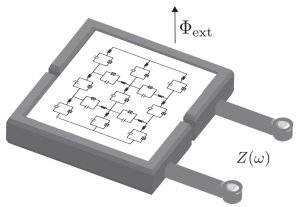The Josephson junction is one of the most important elements in turning quantum phenomena into usable technology.
A new RMIT study establishes a theoretical framework for new optical experimentation on these key devices, with implications for future fundamental quantum research and applications such as quantum computing.
Josephson junction studies
Josephson junctions can be formed by two superconducting plates, separated by a very-thin insulating layer, with electronic charge travelling from one plate to the other via quantum tunnelling, and is an important ‘bridge’ between quantum mechanics at the micro-scale and practical technologies at the macro-scale.
Applications include existing devices such as magnetic field detectors (called SQUIDs), and emerging technologies such as quantum computers.
Josephson junctions are also of interest from a fundamental perspective, used as physical realisations of theoretical models to study phase transitions and topological excitations.
The fabrication technology for these systems is now sufficiently advanced that the parameters governing the physics of interest can be fine-tuned with a high degree of precision.
Shifting experimental focus: from electronic transport to microwaves
Studies of Josephson junction devices to date have typically focused on electronic transport measurements: experimenters attach metallic leads to the device, apply a voltage, and measure the resulting output current.
However, the presence of those electrical connections inevitably introduces an additional source of noise, which destroys many of the quantum effects the experimenters wish to study.
Mitigating this charge noise, and minimising the interaction between the quantum device and the noisy outside world, are major challenges to the development of practical quantum technologies.
Recent experiments (Cosmic, Ikegami, Lin, Inomata, Taylor and Nakamura, from Riken, Japan) have circumvented the problem of noisy leads by putting their device in a 3D cavity where the system can be probed via microwaves. This reduces the contact between the device and the environment, allowing for much cleaner and more coherent study.
The experiment being performed is no longer electronic transport, but spectroscopy.
To maximise the success of this radical new technique, new approaches are required to describe the experiments theoretically.
New theoretical framework: vortices connect theory to experiment
The new RMIT study establishes a theoretical framework for modelling these spectroscopic, microwave experiments on Josephson junctions.
The study focuses on vortices created by magnetic fields threading through any closed loops in the circuit.
Incoming microwaves can drive transitions between different vortex states, which leads to a measurable response.
The theory developed at RMIT provides a general framework for constructing a description of arbitrary planar circuits and extracting measurable quantities from the underlying theory.

“This work connects theory to experiment” FLEET PhD student Sam Wilkinson, lead author of the new study
“This work connects theory to experiment,” says lead author, FLEET PhD student Sam Wilkinson. “It connects theoretical formulations of superconducting networks to microwave spectroscopy experiments, and should open up new avenues for designing and describing coherent quantum systems.”
Because Josephson junction arrays can be designed and manipulated with a large degree of control, they made ideal model systems for studying complicated many-body physics. These systems tend to exhibit very long-ranged interactions and very strong coupling – two features that typically make systems difficult to study theoretically.
“We are hoping that our Josephson junction studies will help with other complex studies too,” says group leader Prof Jared Cole. “Hopefully, by developing tools to understand these controllable systems, we will learn lessons that can be applied to other highly-interacting systems – systems where we typically have less experimental control.”
The study
“Linear response theory of Josephson junction arrays in a microwave cavity” was published in the journal Physical Review B in April 2019. (preprint)
As well as funding by the Australian Research Council, the authors acknowledge the vital computational resources provided by the NCI National Facility systems at the ANU (via the Australian government’s National Computational Merit Allocation Scheme), and valuable discussions with N. Vogt, F. Hassler, R. Cosmic, Y. Nakamura, H. Ikegami and C. Müller.
Dissipationless studies at FLEET
 The study represents one example of the integration of theory and experiment – a feature of FLEET research.
The study represents one example of the integration of theory and experiment – a feature of FLEET research.
Prof Jared Cole’s group at RMIT studies unavoidable measurement, control and fabrication imperfections that lead to weak dissipation of energy in otherwise dissipation-less superconducting devices.
The influence of dissipation and decoherence on electronic transport in nanostructures, and its role in topologically protected conduction channels, is key to the design of future ultra-low energy electronics – the goal of FLEET’s research theme 1 (topological materials).
FLEET is an ARC-funded research centre bringing together over a hundred Australian and international experts to develop a new generation of ultra-low energy electronics, motivated by the need to reduce the energy consumed by computing.
More information
- Contact Prof Jared Cole jared.cole@rmit.edu.au
- Connect at @FLEETCentre
- Visit FLEET.org.au
- Read FLEET research theme 1 (topological materials) news
- Contact FLEET media@FLEET.org.au
- Watch Future solutions to computation energy use
- Subscribe FLEET.org.au/news


